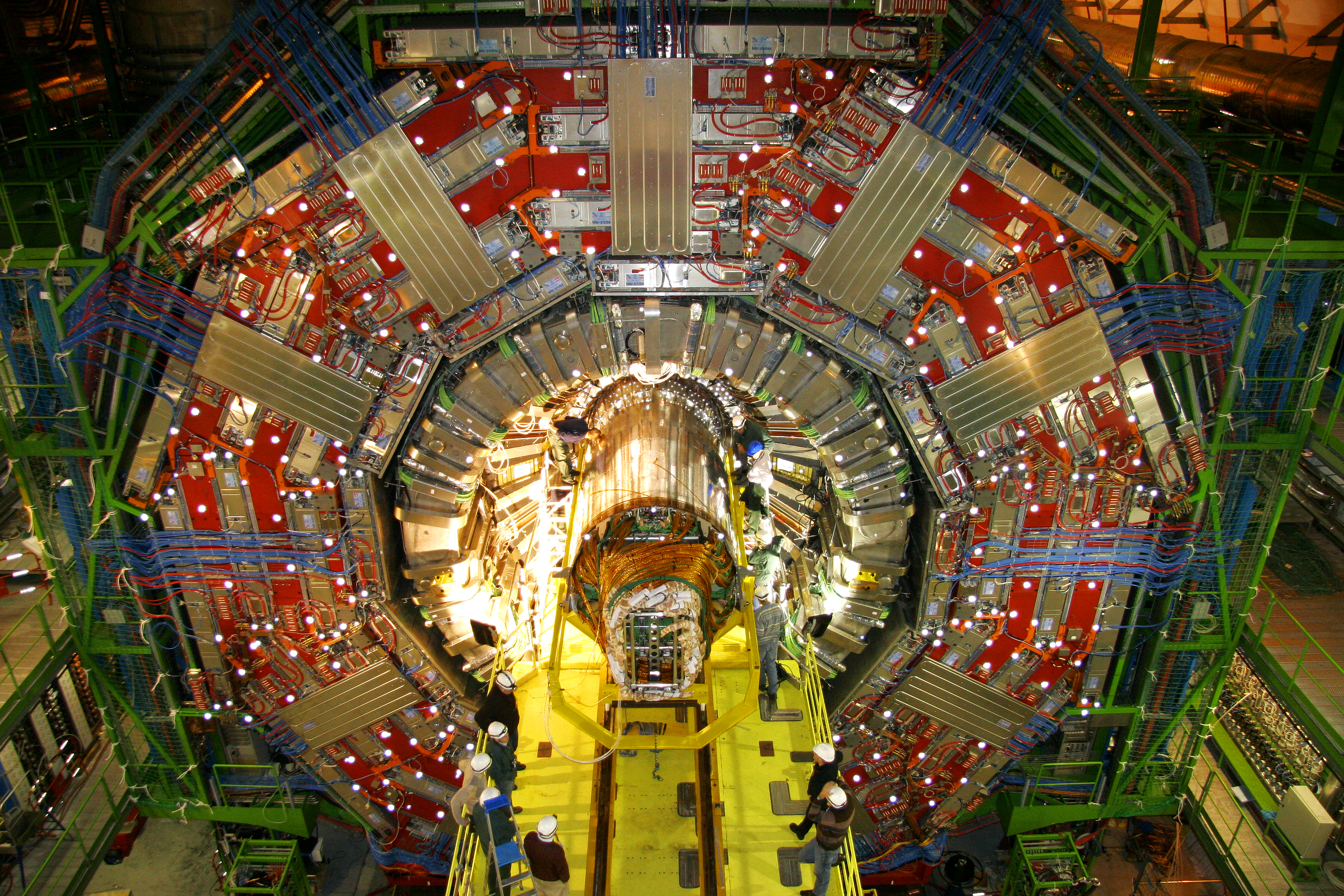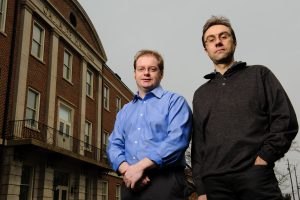
Dr. Conor Henderson’s search for a tiny particle whose recent discovery thrilled scientists worldwide – while simultaneously puzzling the public – began in his high-school library in Ireland. Well, sort of.
Already drawn, as a younger child, to how science seemed like a “natural puzzle,” Henderson, now a University of Alabama physicist, remembers when he first encountered a book, written by Albert Einstein, on relativity.
“I found it in the school library when I was about 15,” Henderson says. “I remember just reading it and being completely blown away. I remember reading that book and thinking, ‘this is what I want to do.’”
He fulfilled his wish as did his colleague, Dr. Paolo Rumerio, also a physicist in UA’s College of Arts and Sciences. The two are among the thousands of scientists who were part of the successful international effort to identify the subatomic particle known as the Higgs boson.
The summer 2012 announcement of the Higgs discovery was made with great fanfare and received mainstream media attention in outlets worldwide. But the effort, the two UA researchers say, isn’t over. It’s ongoing, and the search for other particles – ones that also puzzle the public and which scientists have never seen – continues.
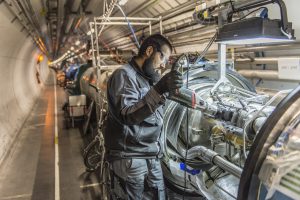
Particles are tiny bits of matter of varying sizes. An atom, for example, is made from proton, neutron and electron particles. The Higgs particle, for which scientists had searched for decades, gives other particles their mass and confirms what’s known as the standard model, a theory of physics that describes how the universe works. The Higgs boson was theoretical, as its existence had never been proven, but its importance to science concepts can hardly be overstated.
“Almost everything we have seen as particle physicists in recent decades has been what was predicted from this standard model,” Henderson says. “The problem is that the standard model cannot be self-consistent as a theory without this Higgs boson existing. If we haven’t seen the Higgs, was everything else we believed basically a lie in some way?
“This theory, that we thought was so accurate, couldn’t have actually been correct without the Higgs’ existence. It would have been a real ‘back to the drawing board’ thing for us. And, I think the Higgs took on particular significance just because it had eluded us for so long.”
The experiment was not without its setbacks, and even once everything was running smoothly, the scientists, Rumerio says, had to invoke patience.
“For two years, nothing was showing up,” Rumerio says. “Finally, there was this little accumulation of data that seemed to possibly be consistent with Higgs. The more we detected, day by day, the more and more consistent it appeared.”
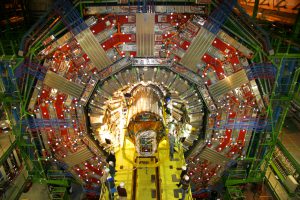
Much of Rumerio and Henderson’s past, present and future research centers around a device called the Large Hadron Collider. Located at the European Organization for Nuclear Research, or CERN, the LHC, buried 300 feet underground and boasting a 17-mile circumference that straddles the borders of France and Switzerland, is the world’s largest particle accelerator.
This accelerator, like others, produces proton particle beams which are made to circulate within the experiment’s massive ring. At different stages around the ring, the proton beams collide, and the energy released in these collisions produces new particles. Detectors are built at the collision locations to analyze these produced particles.
In this way, the researchers don’t actually see the Higgs, but they see the remnants of what used to be a Higgs. Rumerio suggests a way of thinking about the analyses.
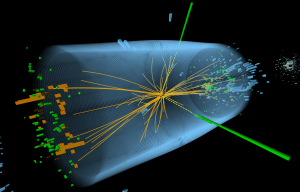 “It’s like a little bomb that explodes, and you measure the fragments,” Rumerio says. “You measure the range, the velocity and the direction, and you can reconstruct and calculate the power of the original bomb. In this case, the power, we call it mass.”
“It’s like a little bomb that explodes, and you measure the fragments,” Rumerio says. “You measure the range, the velocity and the direction, and you can reconstruct and calculate the power of the original bomb. In this case, the power, we call it mass.”
The number of particle collisions inside the ring is mind boggling. There can be up to 40 million collisions every second. As the experiment’s electronics can permanently record between 200 and 300 collisions a second, the scientists developed a method to prioritize which fragments merit further analysis.
Using measurements of energy signal strength, about 100,000 collisions per second are sent to a higher level for a detailed reconstruction of the collisions, or events, as the researchers refer to them. Of those, approximately 200 are typically permanently stored for a full analysis. This level of prioritization is called the trigger system and is the part of the experiment on which Henderson primarily focused.
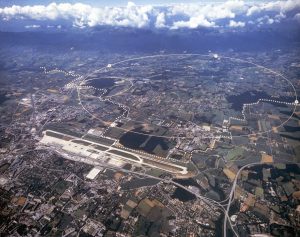
Both Henderson and Rumerio collaborate on the Compact Muon Solenoid experiment, or CMS, at the LHC. Rumerio first joined the research project in 2005, aiding with the construction of the experiment and the calibrations of two of the experiment’s detector components. He develops software used in analyzing data from the experiment and is one of those analyzing the data. Before the LHC could be used in the search for the Higgs, the scientists first had to prove the mammoth device could be trusted.
“We were measuring all of these other processes that we know about already proving that our detector and our understanding of the detector were working,” Rumerio says. “When you see something new, like the Higgs, then the community can believe you.”
During the summer of 2013, Rumerio spent four months at CERN replacing and testing part of the system’s electronics for an upgrade that will improve the experiment’s performance. He’s particularly interested in searching for a different particle called a leptoquark, while Henderson’s interest is piqued by something called a graviton, an exotic particle of gravity that might exist in an alternative theory of gravity involving warped extra dimensions of space.
Rumerio and Henderson wish to expand their UA research group, which also includes two post-doctoral researchers. These exotic particles and further analysis of the Higgs’ data, ensures there are ample insights awaiting discovery.
“There are good reasons,” Henderson says, “to think that the standard model, even with the Higgs, is not the end of the story.”
